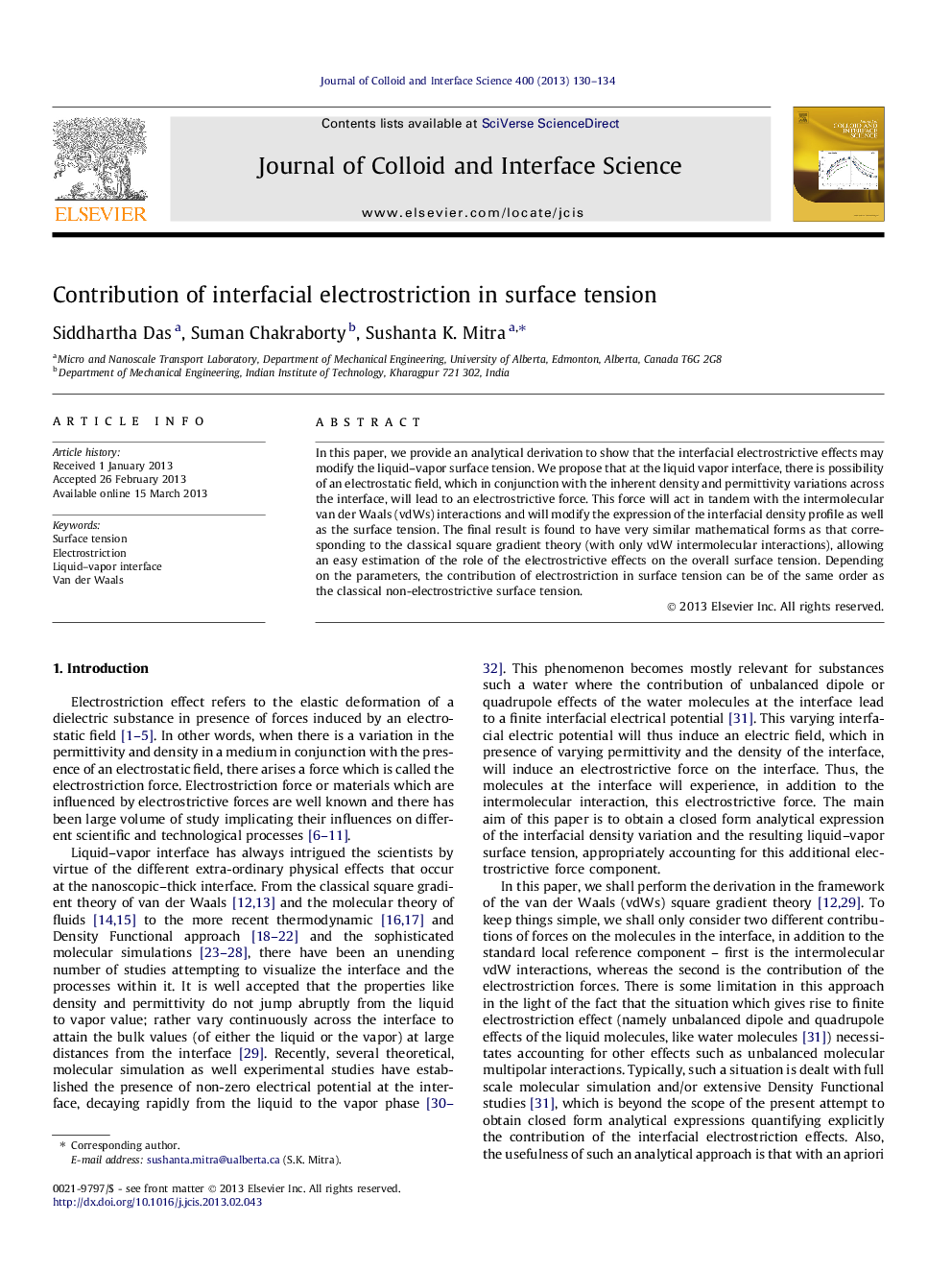| Article ID | Journal | Published Year | Pages | File Type |
|---|---|---|---|---|
| 607713 | Journal of Colloid and Interface Science | 2013 | 5 Pages |
•Liquid–vapor interface is characterized by intrinsic electrostriction effect.•This electrostriction effect is found to modify the liquid–vapor surface tension.•Results are provided in the framework of van der Waals’ square gradient theory.•Impact of electrostriction effect can be comparable to van der Waals effect
In this paper, we provide an analytical derivation to show that the interfacial electrostrictive effects may modify the liquid–vapor surface tension. We propose that at the liquid vapor interface, there is possibility of an electrostatic field, which in conjunction with the inherent density and permittivity variations across the interface, will lead to an electrostrictive force. This force will act in tandem with the intermolecular van der Waals (vdWs) interactions and will modify the expression of the interfacial density profile as well as the surface tension. The final result is found to have very similar mathematical forms as that corresponding to the classical square gradient theory (with only vdW intermolecular interactions), allowing an easy estimation of the role of the electrostrictive effects on the overall surface tension. Depending on the parameters, the contribution of electrostriction in surface tension can be of the same order as the classical non-electrostrictive surface tension.
Graphical abstractFigure optionsDownload full-size imageDownload high-quality image (62 K)Download as PowerPoint slide
